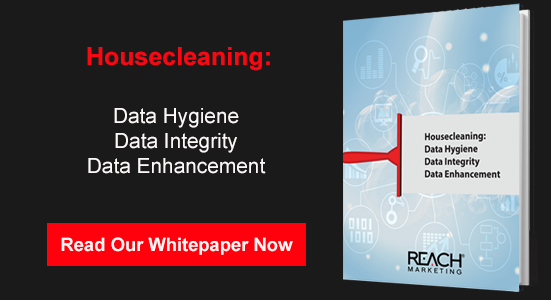
Knowledge is power, especially when it comes to customer service. The more you know about your customers, the better you’re able to serve them the content they want, answer their questions, and create a customized environment around them. Data enhancement evolved to meet business’ needs to know more about their customers. The next step in that evolution is data blending.
Data blending looks at customer records not in isolation, but as part of a larger picture. Each piece of information you gather about a prospect is important in its own right, but it also contributes to a more nuanced view of that potential customer and the audience segments to which he or she belongs. In other words, it’s useful to compile complete customer records; it’s even more useful to put those customer records into a larger context to derive new insights from them as a whole.
Centralizing Intelligence
Data used to be an IT-managed resource, but that’s changed. As marketing automation tools have become more sophisticated and as everyone has become more tech-savvy, data has increasingly come under the aegis of sales and marketing. You’re also collecting that data from a far wider range of sources, including mobile apps, website data, and third-party sources such as subscriber-based lists. Because data’s pouring in from so many different sources, having a single, central database to coordinate it all is vital. Marketing automation systems that synch with your CRM are a must.
Customer data isn’t the only kind of information that affects buying decisions. More generalized knowledge can also have a significant impact. Think about how soaring summer temperatures produce a jump in air conditioning installations or how flu season drives more patients to make an appointment with their family physician, and you’ll see how important other data sources can be. With today’s advanced technology, you can combine data sets to spot new ways in which they influence each other.
Once you have your data in one place, you’re able to do something siloed systems can’t and layer it to derive new insights from it.
Blending Data
Data blending is far more sophisticated than just displaying everything on a single dashboard. It’s an analytical process that reveals relationships between data by combining information to find common values. For example, you might find that your latest newsletter had a dip in click-through rates among part of your audience but a spike for others, which in turn could lead to more refined segmentation options.
What happens when you blend the data you gather with data enhancement services that give you more complete customer records? Let’s take a look at that example again. Not only have you found that some of your customers were more likely to click through, but with data enhancement, you’re also able to see a common denominator between them that you may not otherwise have spotted: Most of them work in a particular geographic region. Now you’re able to focus your efforts on this newly defined audience segment while looking at where your message underperformed to find ways of amplifying the signal there.
By seeing information as pieces of data that comprise a detailed composite image of individual customers and of your audience as a whole, you’re able to fuel new insights.
© Reach Marketing LLC 2016 All Rights Reserved.






